Intro to high-resolution audio
Digital music that gets back to great sound
In this article: We cover the basics of high-res audio
It's the small details that make your music come alive — the sizzle of brushes on a cymbal; the sound of fingers gently gliding along guitar strings; a quick intake of breath before the singer starts. Want to hear all those hair-raising details? Give hi-res audio a try.
Hi-res audio files sound better than CDs. And they sound way better than the compressed digital audio files we get from iTunes, Amazon, and most music streaming services. They come much closer to capturing all the nuances of the original performance.
Great sound with digital convenience
High-res audio formats give you excellent sound quality and the convenience of digital audio files. High-res music files are a bit larger since they retain all the audio information from the original recording, so they take up more space on your hard drive and require more bandwidth for streaming.
These tracks can cost a little more, too. But if music is your passion, it's a small investment towards increased listening pleasure.
High-res audio specs
Recordings are converted to digital audio through a series of waveform samples.
The term "bit depth" tells you how detailed each sample is. High-res files usually have a depth of at least 24 bits.
The sampling frequency tells you how many samples were taken per second during the digitization process. More frequent sampling leads to smoother, more natural sound. High-res files have sampling rates up to 192 kHz.
Of course, all that extra information increases file size. A 24-bit/96kHz high-res music file, for example, is about three times bigger than a CD-quality file of the same music track.

High-resolution audio can provide much more musical detail than CD.
High-resolution audio file types — bigger and better
It's important to know which high-resolution file types are compatible with your system.
WAV
- Standard format for CDs
- Can be played on Windows® and Apple® computers
AIFF
- Apple’s uncompressed audio format
FLAC
- The most popular lossless compressed format
- Takes up about half the space of uncompressed files
- Not compatible with iTunes or Apple Music
ALAC
- Apple's lossless compressed audio format
- Takes up about half the space of uncompressed files
- Not always supported by non-Apple devices
DSD
- Processes the audio signal as a stream of single bits (vs. PCM’s multi-bit chunks)
- Most high-res players convert DSD files to PCM for playback
- Some players support native DSD playback
MQA
- An additional encoding process that makes PCM and DSD files small enough for streaming
- Preserves all file information for playback through audio components with an MQA decoder
- Backward compatible: MQA-encoded files can be played through any audio equipment
Learn more about how MQA makes high-res audio files small enough to stream.
Where to find high-res music online
Here's a short list of some of the major sites offering high-resolution downloads and streaming:
- Offers the world's largest selection of high-res audio downloads
- File formats: WAV, AIFF, ALAC, FLAC
- Has a wide selection of audiophile recordings available for streaming
- File formats: FLAC
- Offers an extensive selection of music in all genres for downloading and streaming
- File formats: WAV, AIFF, FLAC
- Offers high-fidelity downloads in stereo or surround sound
- File formats: MP3, Dolby Digital, DTS, WMA Lossless, FLAC, PCM, Blu-ray, DVD-Audio
- Offers classical music downloads and streaming
- Subscription streaming service uses 16-bit FLAC
- File formats: FLAC stereo and surround, DSD stereo and surround, WAV
- Three levels of subscription streaming services: FLAC 16-bit/44.1 kHz, FLAC 24-bit up to 192 kHz
- Digital album booklets for many titles
- Download file formats: FLAC, ALAC, AIFF, WMA, WAV
- premium subscription streaming service uses 16-bit FLAC with MQA encoding
Amazon Music HD offers three sound quality options:
- SD — Bitrate: 320 Kbps
- HD — Bitrate: average of 850 Kbps; Sample rate: 16-bit/44kHz Ultra
- HD — Bitrate: average of 3,730 kbps; Sample rate: up to 24-bit/192kHz
Media players for high-res audio
iTunes can play AIFF and WAV files, but it's probably not the best choice if you're building a high-res music library. iTunes doesn't provide the best sound quality, and it doesn't support common high-res formats like FLAC.
If you're looking for a high-res media player that works with iTunes, check out Amarra, Audirvana, or Pure Music.
The latest version of JRiver Media Center is compatible with MacOS®, and also runs on Windows® and Linux systems.

Roon is a subscription-based music management system that provides extensive info about your music, including artist bios, photos, reviews, lyrics, and show dates. Its "Discover" feature lets you find new music based on your preferences. Roon offers optional integration with TIDAL. Learn more about how Roon makes high-res listening easy and fun.
Gear for listening to high-res music
High-res audio support has made its way into all sorts of audio gear, from stereo components to home theater receivers and even sound bars and car stereos.

Portable high-res music players come with ample memory for file storage. Many also have built-in headphone amps to give you the best listening experience with high-performance headphones. See our best picks.
High-resolution digital music players and network audio streamers let you enjoy high-resolution music through your home stereo system.
The Bluesound Vault 2i is a streaming music player with a built-in CD ripper and a 2TB hard drive. It lets you access TIDAL (including their high-res MQA service tier). It can also store downloads from high-res music sites. You can enjoy high-res music without involving a computer.
Personalized advice from our team of experts
Have questions about which high-res formats and equipment will best suit your needs? Our expert Advisors know the gear inside and out. Contact us today.
Free lifetime tech support is included with every Crutchfield purchase.
Comments (16)
Please share your thoughts below.





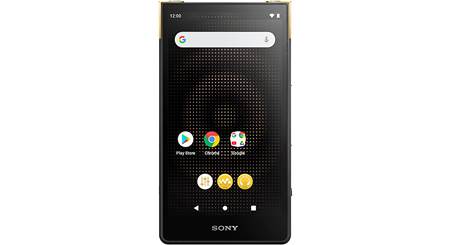

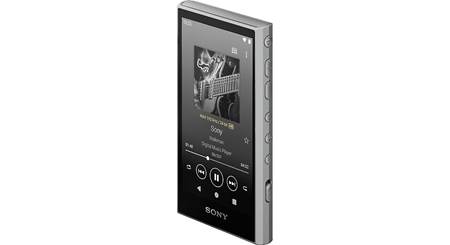
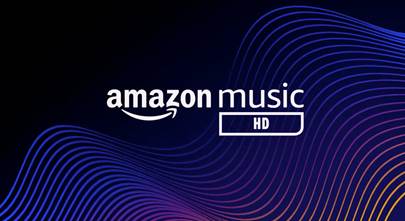

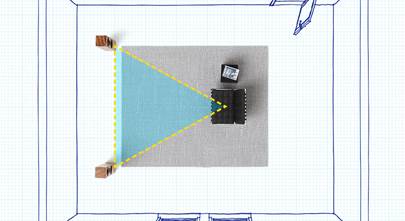

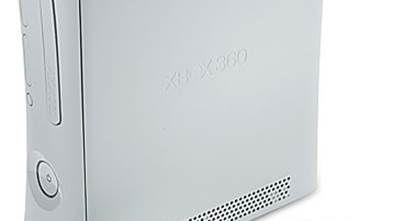

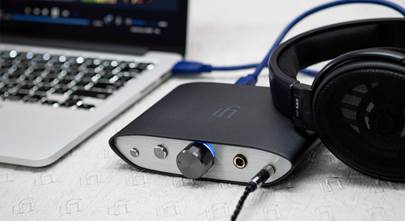
mobilee.jpg)
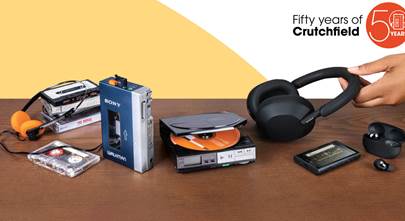

LaToya Jaxon from Alberta, ca
Posted on 5/13/2018
I used to download youtube videos then convert into mp3 so my questions is do i have a good quality sound from there? For me stills sound clear and nice treble and bass
C S
Posted on 5/6/2018
I believe two things needed to be mentioned in this article - Hi-Res Music Source - 7Digital should have been mentioned. They have better GUI which clearly identifies 16 and 24 bit FLAC and their search function is better than HDTracks. I also found out that certain albums are available in Hi-Res format only on 7Digital. One big example is Pink Floyd. Many Pink Floyd albums are not available on HDTracks. - Hi-Res Media Player - Foobar 2000 should have been mentioned. It is the most widely used player and most configurable player available out there, but it is something that Apple devotee might have not heard of.
JOhn from Chicago
Posted on 4/24/2018
How to convert old band tapes to High Res into my laptop. What hardware and software is needed. I had them converted by a studio but they just used a regular PC.
Steven Downes from Corvallis
Posted on 6/25/2017
So, I would love to buy Hi-Tech audio, but do you know what is preventing me from taking the step? The mastering process. When an album gets "re-mastered", typically it is compressed and louder and gas terrible Sonic's that makes a very tiring listening experience. So, how do I know which version I am buying. I want the original artist recording and not the inferior remastered versions. How can I be sure which I am buying? From what I see, the vendors don't indicate this.
Happy_Fillmore from SW Wisconsin
Posted on 3/30/2017
Nice to see JRiver Media Center recommended. I'd like to point out it is available for Linux as well as PC and Mac. It's server feature is great too. It allows me to stream my hi-res flac files to my mobile devices (among other playback options) without conversion as long as whatever network I'm on can keep up. 4G LTE does pretty good with 24/96 files in my area. Bottom line? Good choice for Crutchfield to list for this article.
Ben oukadon from Austin tx
Posted on 1/14/2017
We can tell this writer is anti-Sony and Apple's pay stub. If you're going to write about HiRes AUDIO you have to mention Sony.
Ahwar
Posted on 9/14/2016
You're on the money...
JohnInHvl
Posted on 4/25/2016
Steve from Philadelphia, you may want to have another cup of coffee. But didn't you mean to say that 1000 MB is 1 GIgabyte, and 1000 Gigabytes is 1 Terabyte. Which is also 1,000,000 MB . Unless you are looking at processors which look at them as 1024 MB, 1024 GB ... The binary equivalents.
Steve from phila
Posted on 4/22/2016
First, a Terrabyte (TB) is 1,000 Megabytes (MB) not 1,000,000 MB. Secondly, a CD can contain compressed audio and there is no way of uncompressing it from the CD. Especially in older recordings that you may see online. It depends on how the CD was mastered. The only possible way to make an older recording higher resolution then what you hear on the published CD is to re-master from the original analog magnetic tapes track,channel by channel and digitize them at a higher resolution. Now, if artists/record companies want to do this they should do it quickly as magnetic tapes fade over time and once it's digital, unless you re-record it that's it!
Gary from Ohio from Columbus
Posted on 2/12/2016
Hi Gary from Reno, I have an aux port on the head unit in my vehicle I connect to my smartphone, and I use Onkyo HF Player App to play FLAC files from there. The HF Player supports Hi Res formats if connected to an external DAC, if you really want the higher quality. I have also used the HF Player with Bluetooth. The nice thing about it is it will play your Hi Res files at a lower sample rate if you don't have a DAC, so you don't need to have duplicate FLAC files at different resolutions to enjoy your music via the smartphone vs your Hi Res players.